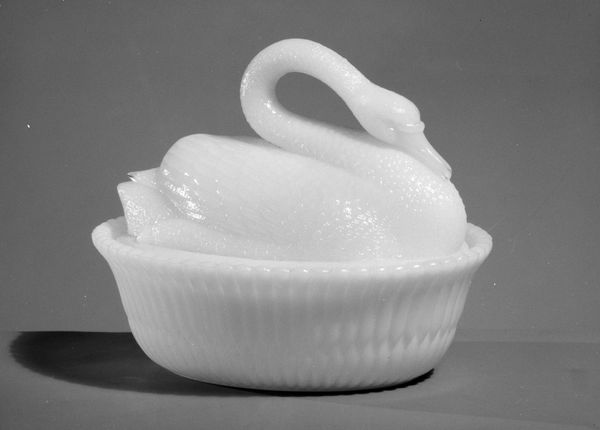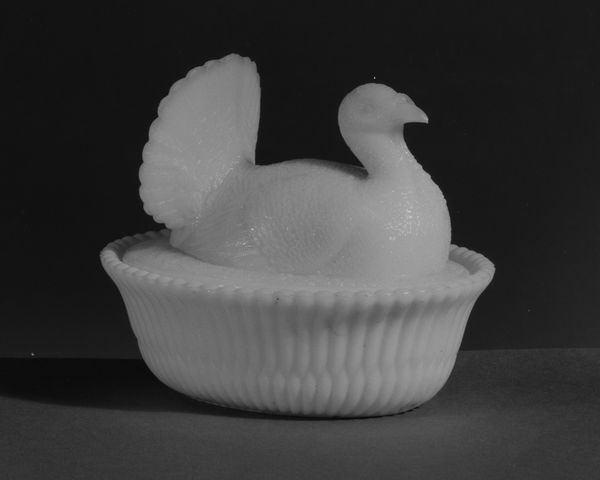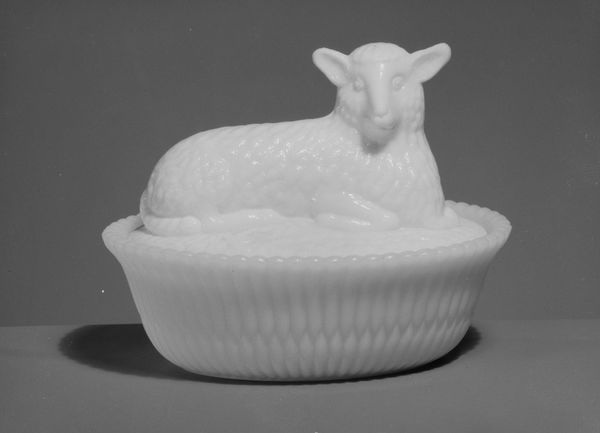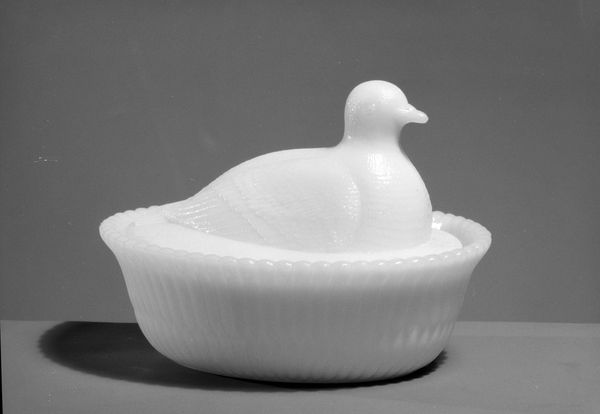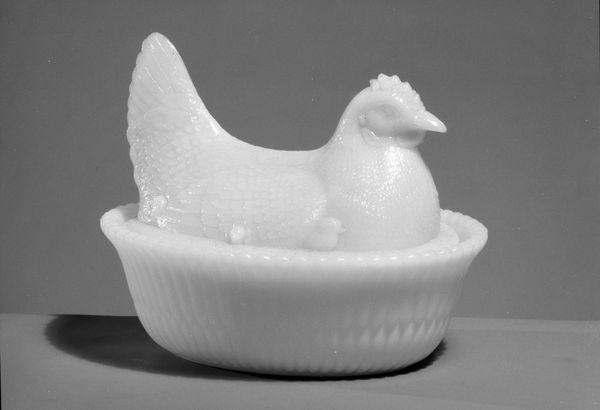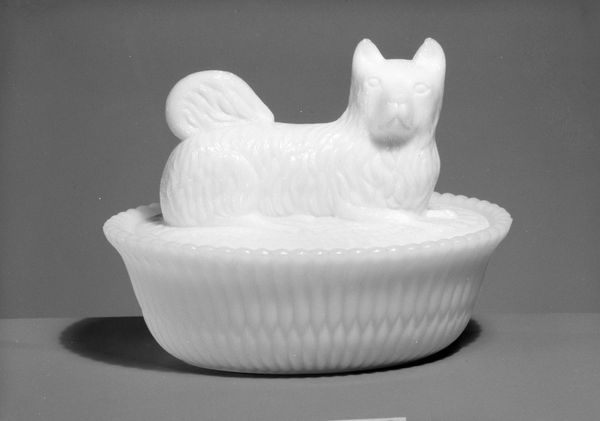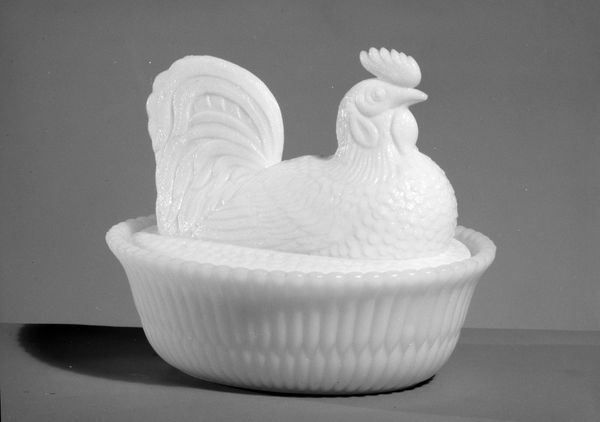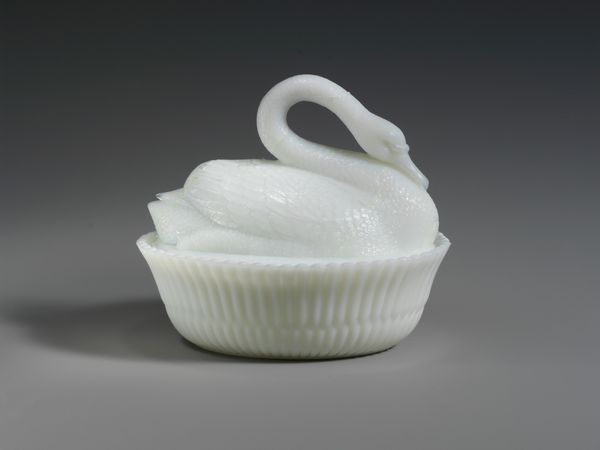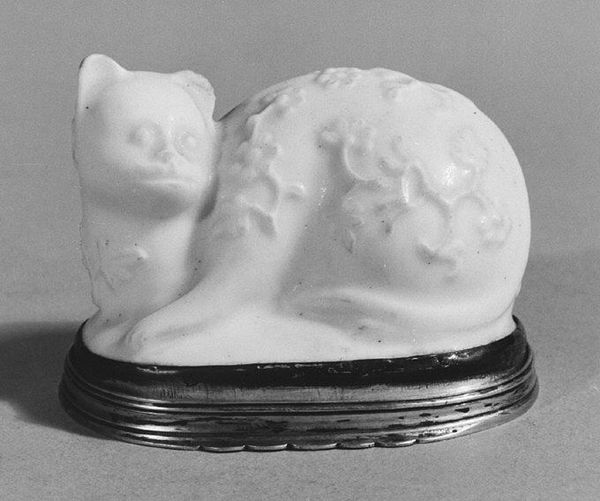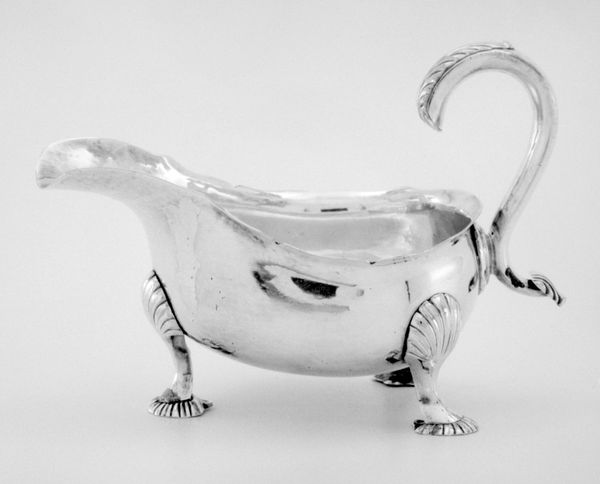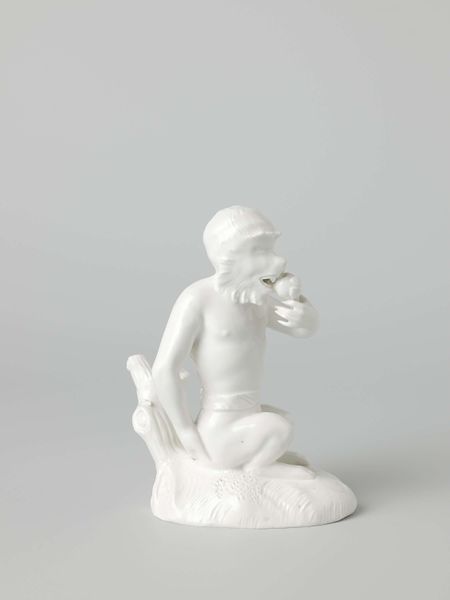
glass, sculpture
#
figuration
#
glass
#
sculpture
#
horse
#
united-states
#
decorative-art
Dimensions: Dimensions unavailable
Copyright: Public Domain
Curator: How serene! My immediate sense is one of quiet domesticity, perhaps even something a child would cherish. Editor: That's interesting. What speaks to that feeling for you? Because I see something quite different when considering its history. The piece we are observing is titled “Figure Dish”, attributed to McKee and Brothers and dates from between 1880 and 1890. This milky white, glass sculpture is now held in the collection of the Metropolitan Museum of Art. Curator: It's precisely the use of milk glass and the simple form of a resting foal that suggests innocence and perhaps, fragility. The choice of the horse, often a symbol of nobility and freedom, is softened by its passive posture, made smaller, approachable, and placed within this diminutive dish form. Does the historian in you see something more about the makers of that period? Editor: Most definitely. During that era, glass production became more accessible and moved toward mass-produced decorative items in America. These mass-produced forms acted as markers of social status for new industrialists. McKee, notably one of the largest manufacturers, became known for its decorative tableware appealing to that newly affluent middle class. Curator: I see, the "Figure Dish" is not merely a cute ornament but part of this broader picture of America defining itself and pursuing wealth. A symbol of status and taste in the late 19th century. Editor: Exactly. The iconography is loaded with the aspirational values of the Gilded Age: pastoral ideals merged with commercial ambition. Although not rendered in gold, its gleaming opaque form evokes a subtle richness attainable through mass production. The past in a small, elegant vessel, crafted in the United States, that offers silent witness. Curator: Thinking about that moment and all of its economic drives transforms the piece and deepens it for me. It’s a cultural symbol imbued with meanings related to identity and class that are no longer apparent upon just gazing at the beautiful object itself. Editor: Precisely. What seems at first to be delicate ornamentation becomes an accessible portal into the complicated story of industrialization and aspiration.
Comments
No comments
Be the first to comment and join the conversation on the ultimate creative platform.

